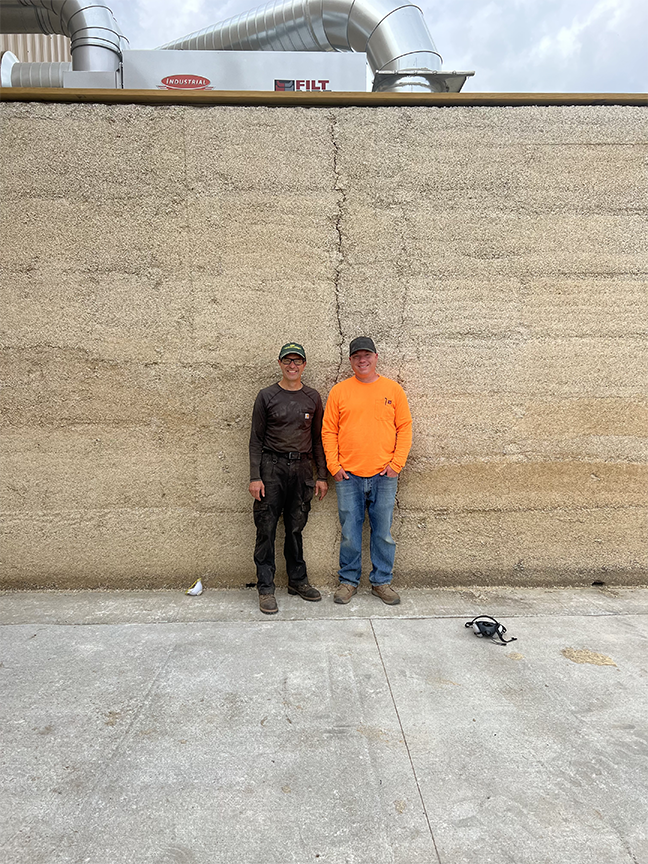The Complete Hemp Processing Facility in Winfred, South Dakota opened its doors on Aug. 4, 2023, and since then they have been experiencing great success and growth.
In February, they made a goal to reach 10,000 acres of hemp in South Dakota. Although they did not make that goal on paper, they met it in a different way.
Ken Meyer, vice president of Complete Hemp Processing said, “Even though we only went up 500 acres as far as our hemp fiber facilities in the state, we had a 200% increase in amount of product available to process.”
The acre count in South Dakota is currently 3,000, and according to Meyer, the future of the industry is full of potential. Material from the hemp plant can be used in many different supply chains that most people don’t even realize is possible.
Hempcrete is one of those products. This product is a mixture of hemp hurd and lime. Although it sounds like it’s a concrete product, it is actually used as a type of insulation for buildings and homes.
Meyer explains that you still frame a home the same way, but then the hempcrete becomes the inside and the outside of the house. This product helps with humidity, reduces hot and cold spots, helps with outside noises, and is vapor permeable.
“Your only limitation is your imagination with this product,” Meyer said.
Kevin Barlow, the plant manager at the facility, talks about how easy it is for them to change the consistency of the fiber with their machines to use it for products like animal bedding or ingredients used in plastics.
“Everything that you can make out of a tree you can make out of hemp, but it’s going to take you 15 to 30 years to grow,” Meyer said. “We can grow the hemp plant in 100 days, and we do it yearly.”
The facility in Winfred, South Dakota is currently producing 9,000 pounds of material per day while running on a 24/7 shift. Farmers plant, grow, harvest and bale the hemp and then deliver it to the facility by the ton to be processed.
Farmers can get anywhere from three to five tons per acre depending on weed control, mother nature and the care of the crop. The farmer must deliver at least two tons to break even on their cost, which is $600.
Meyer says that hemp farmers must go through a learning curve, but there are a few major problems that they must face. Currently, the biggest issue is weed control. This results in the farmer having to get the seed in the ground in early May to beat the weed invasions.
However, according to Meyer, the benefits outweigh the drawbacks. Farmers are always looking to find a rotational cash crop and hemp is the perfect crop for it. All that is needed is the machinery that farmers already have sitting in their sheds.
“All they need is a bean head and they can harvest their own crop,” Meyer said.
The future of hemp is not only bright for the economy and the facility in Winfred, but also for the surrounding farmers. With a new processing facility, the possibilities are endless.

















Julie Lindemann • Feb 3, 2024 at 1:00 pm
After needing to leave our Sioux Falls home due to a neighbor’s hot tub creating serious disability for my spouse and I. Then learning how Electro-hypersensitivity is an all to frequent occurrence nationwide from “Dr Sharon Goldberg video; EMF Effects..” We can’t help but wonder if there are any hemp home models available in South Dakota to view.
Considering hemp homes require less electricity. And less electrical in general could definitely help EHS Victims who get painful spasms, dizziness, and frequent vomiting from it.
Thank you, Julie
Alexa wambolt • Oct 18, 2023 at 8:54 am
Thus is so awsome..thanks for doing this